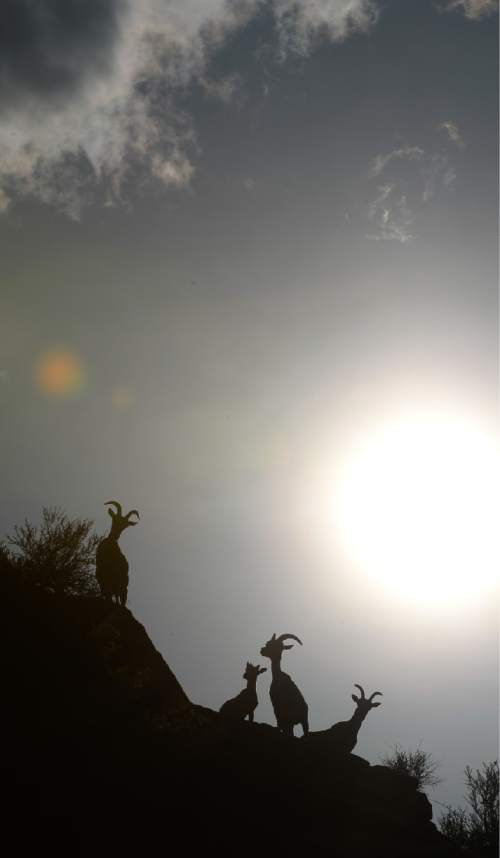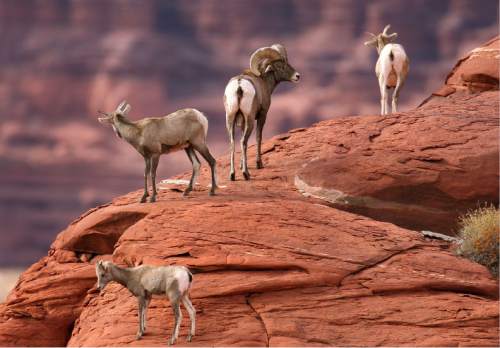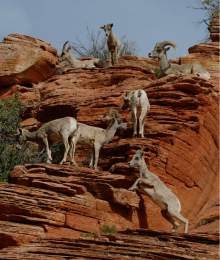This is an archived article that was published on sltrib.com in 2015, and information in the article may be outdated. It is provided only for personal research purposes and may not be reprinted.
Some people joke that if you look closely at male bighorn sheep this time of year, you can see a little caption box above their heads with stars, money signs and exclamation points.
The rams, at least the dominant males, have been butting heads, literally.
Each year in the late fall, bighorn sheep gather for mating season. Males of the herd determine who gets to breed with the females with violent head-on collisions. The last male standing gets "dating" rights.
There is a chance to see the fall mating ritual of Utah's bighorn sheep across the state, but wildlife officials will be leading a free tour near Green River on Dec. 6.
Wild sheep become less cautious of being around people during the rut and their preoccupation allows for excellent viewing opportunities.
Division of Wildlife Resources employees will lead a group of people to an area along the Green River for a chance to get a good look at gathered bighorn and perhaps a chance to see, and hear, head butting.
"The opportunity to see the courtship behavior of these animals is worth the trip," Brent Stettler, wildlife resources regional conservation outreach manager, said in a release.
Participants should meet at 8 a.m. in the parking lot of the John Wesley Powell Museum, 1765 E. Main St., in Green River. The group will head north to an 8-mile stretch of dirt road — passenger car-friendly weather permitting — along the river.
People with binoculars and spotting scopes should bring them. Cameras, warm clothes and snacks and water also are a good idea.
There is a chance the bighorn sheep will not be spotted during the free event.
Bighorn sheep were plentiful when pioneers arrived in Utah, but the introduction of disease from domestic sheep and overhunting by miners almost led to the extirpation of the species.
Efforts to restore the herds have proven successful and the bighorn population — featuring desert, Rocky Mountain and California subspecies — is now numerous enough that animals are being moved to new habitat across Utah.
Twitter: @BrettPrettyman —
Watch the show
O See a video of bighorn sheep viewing in Utah https://www.youtube.com/watch?v=vHhayt2TXFw.









